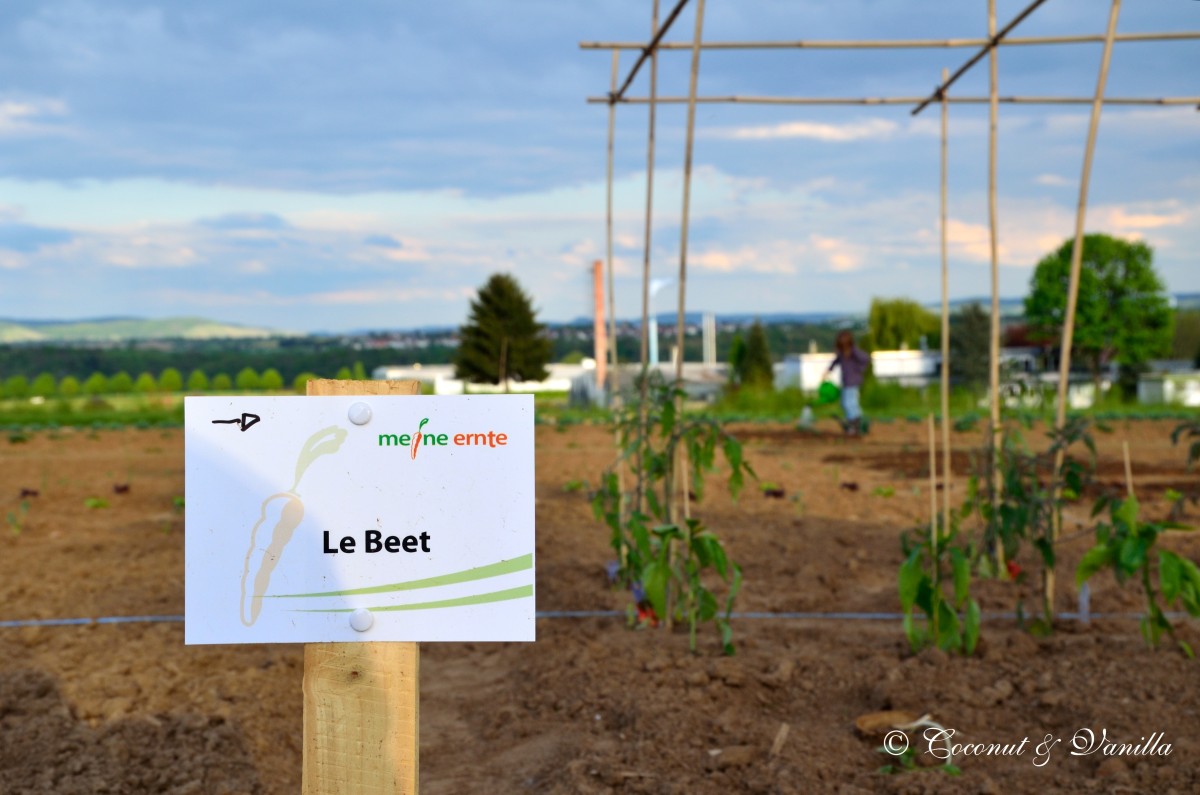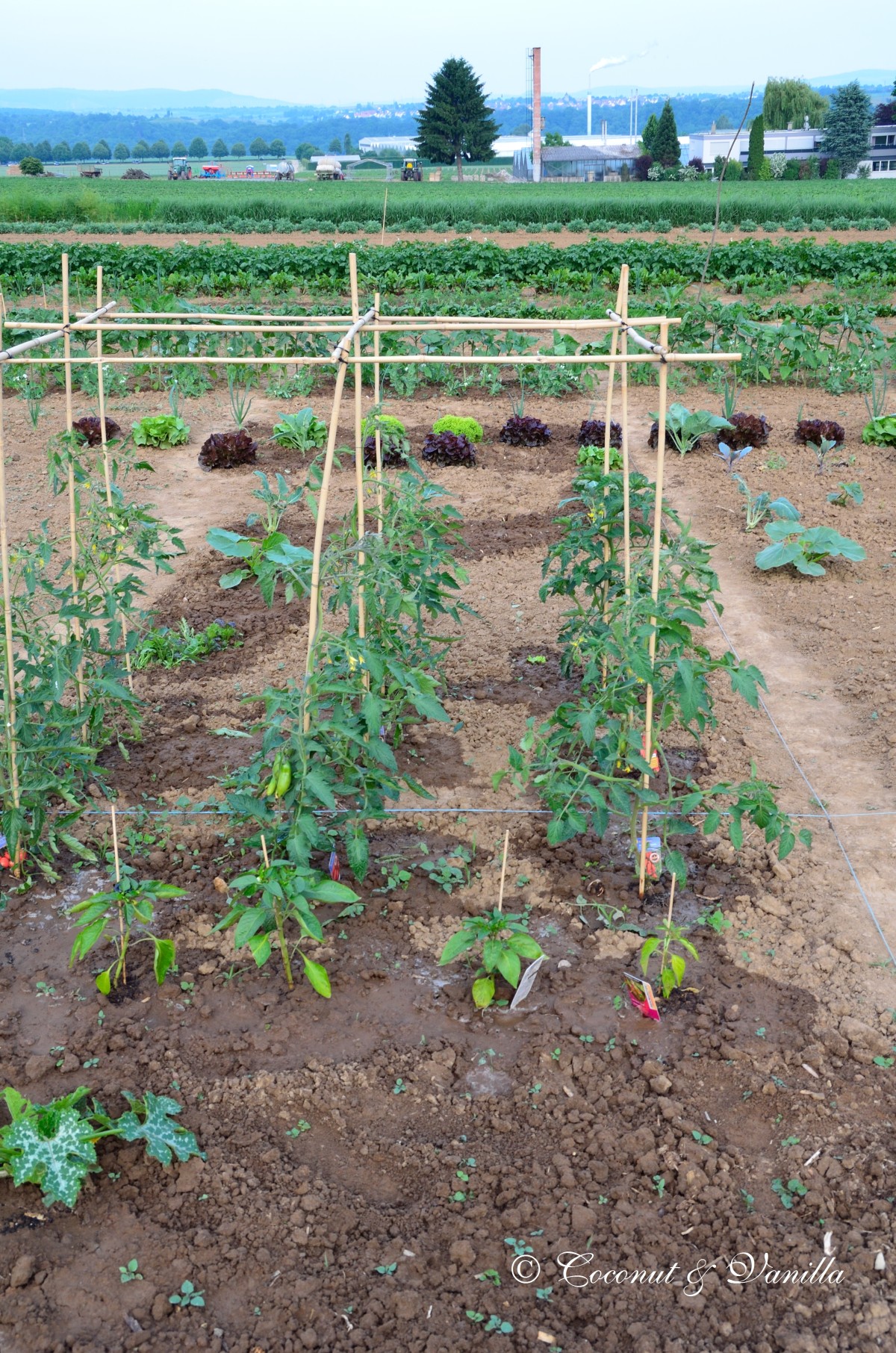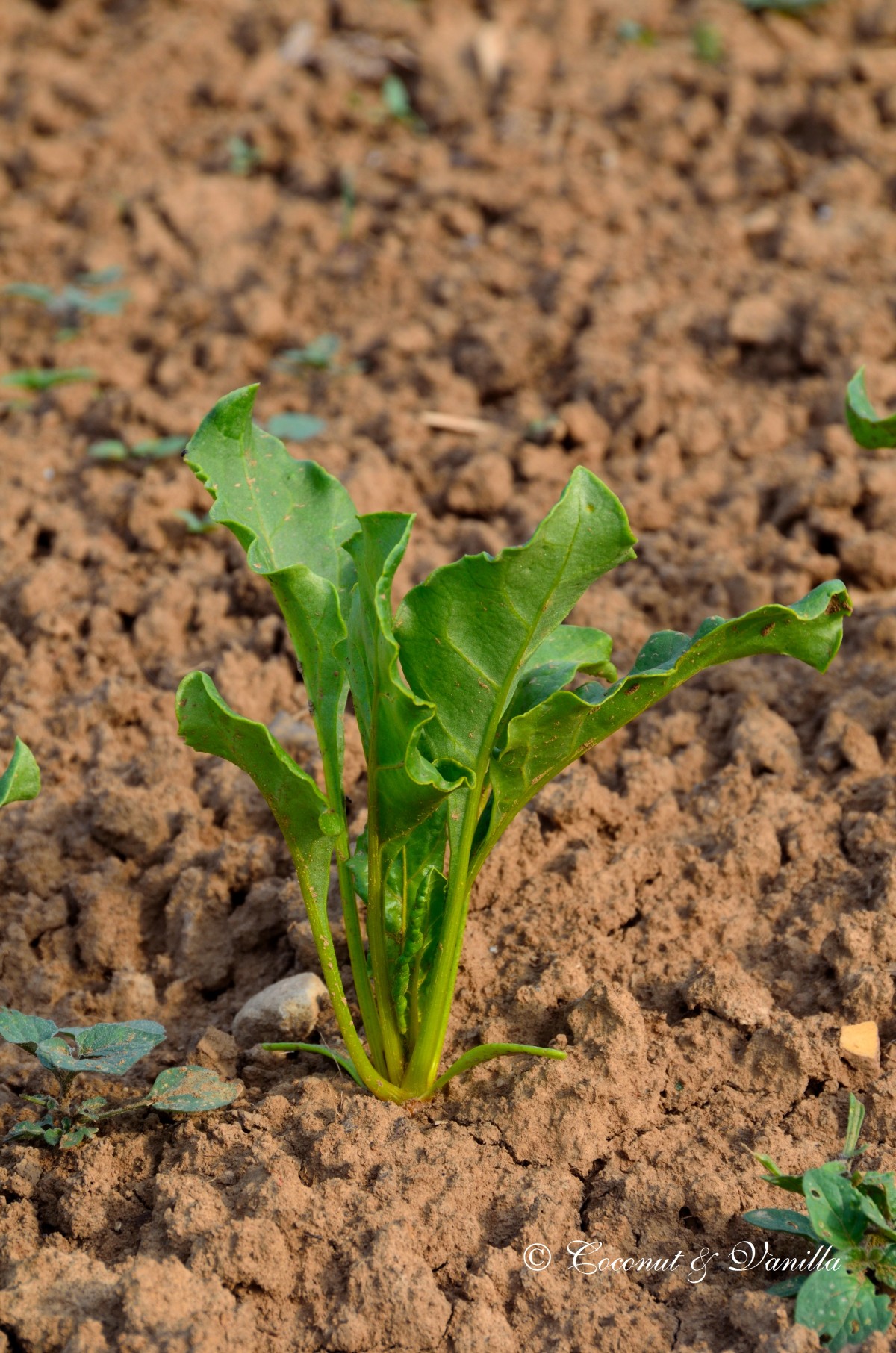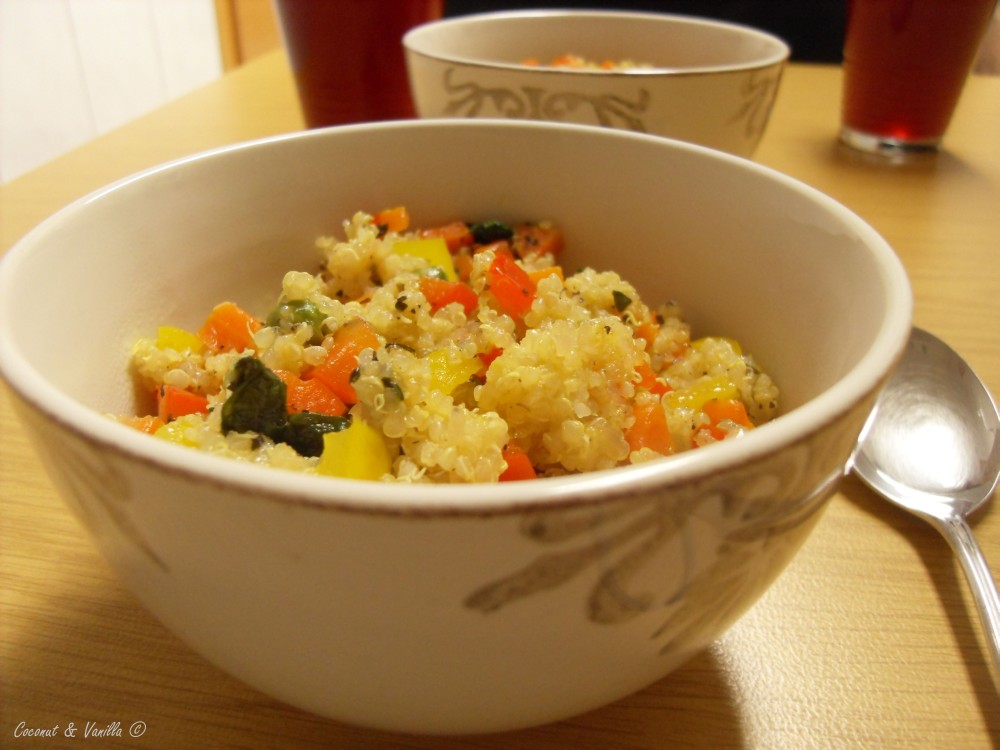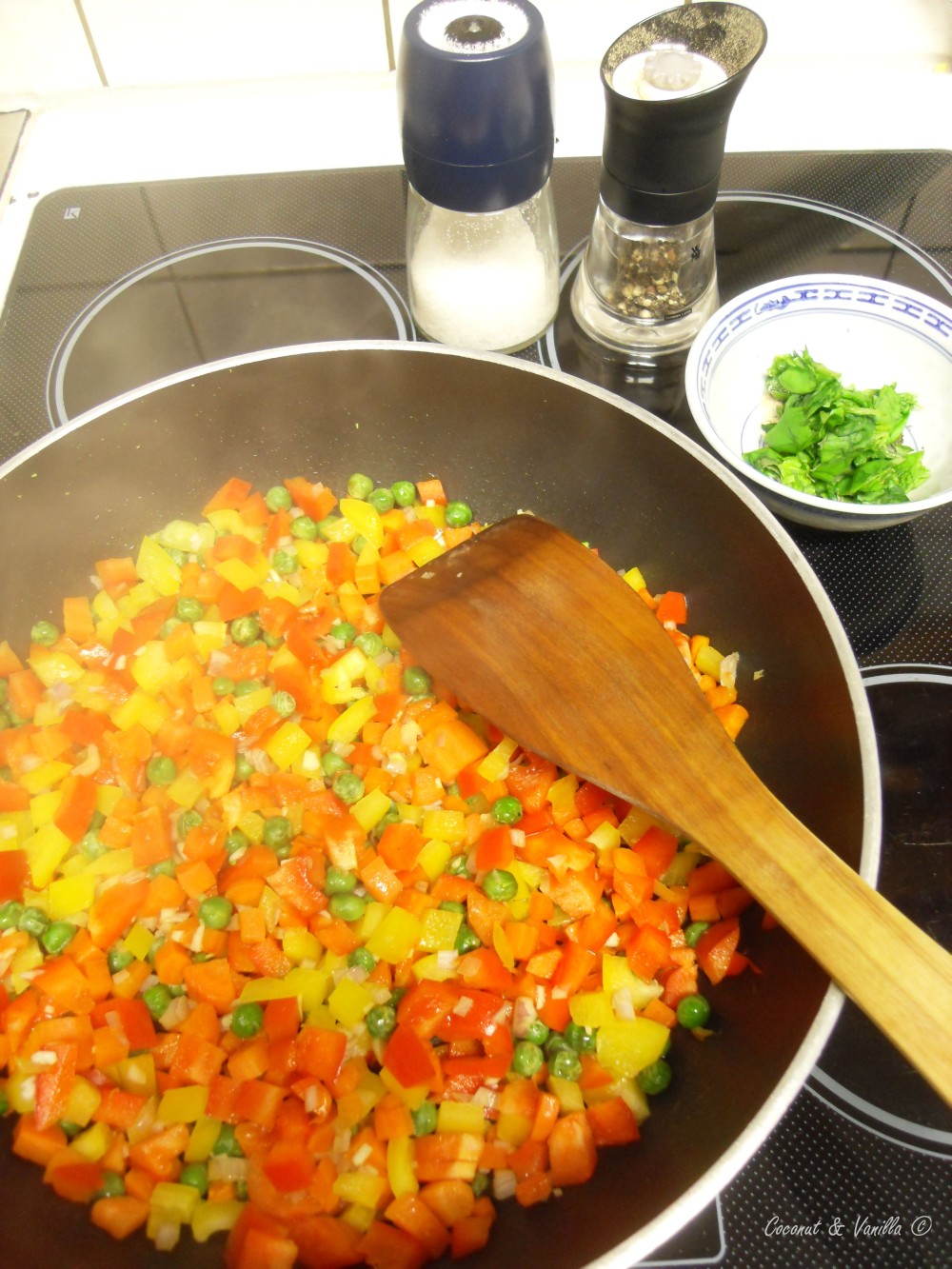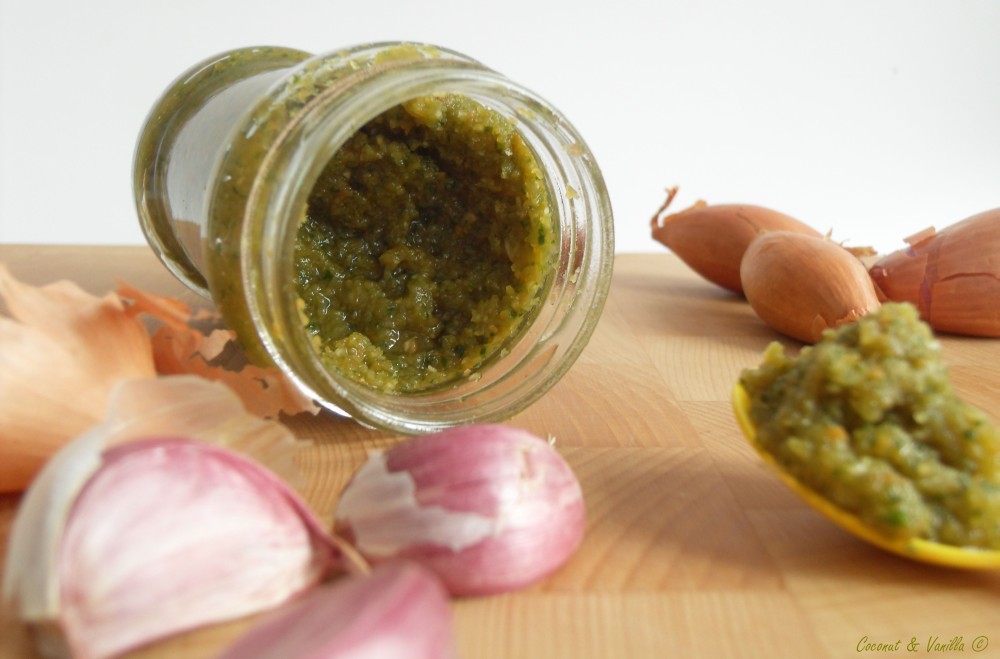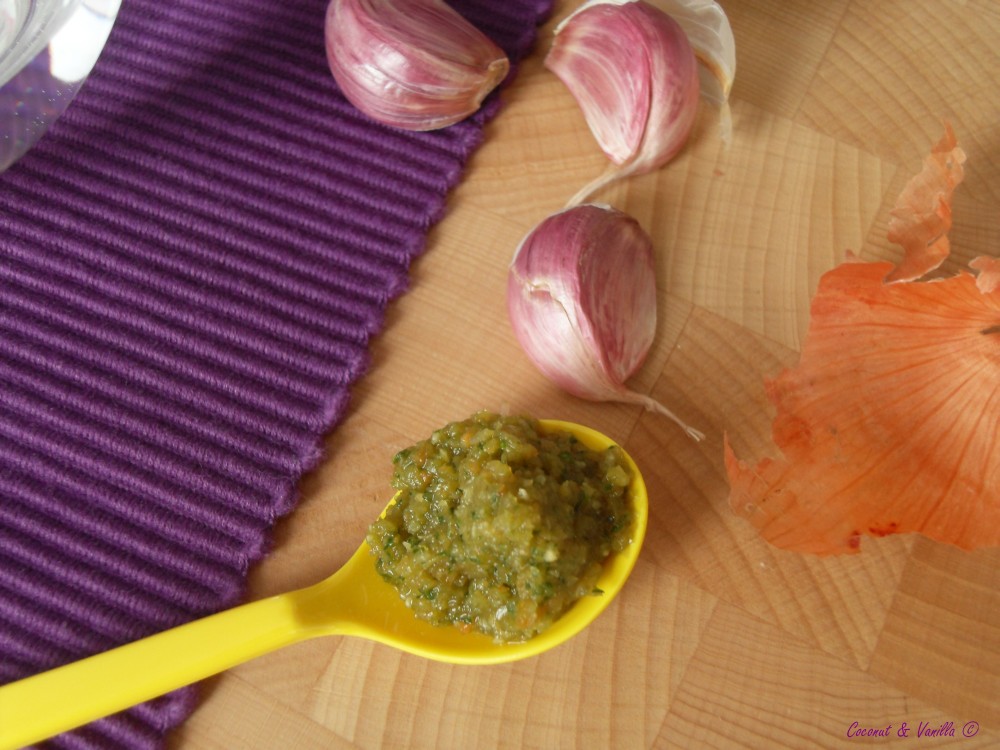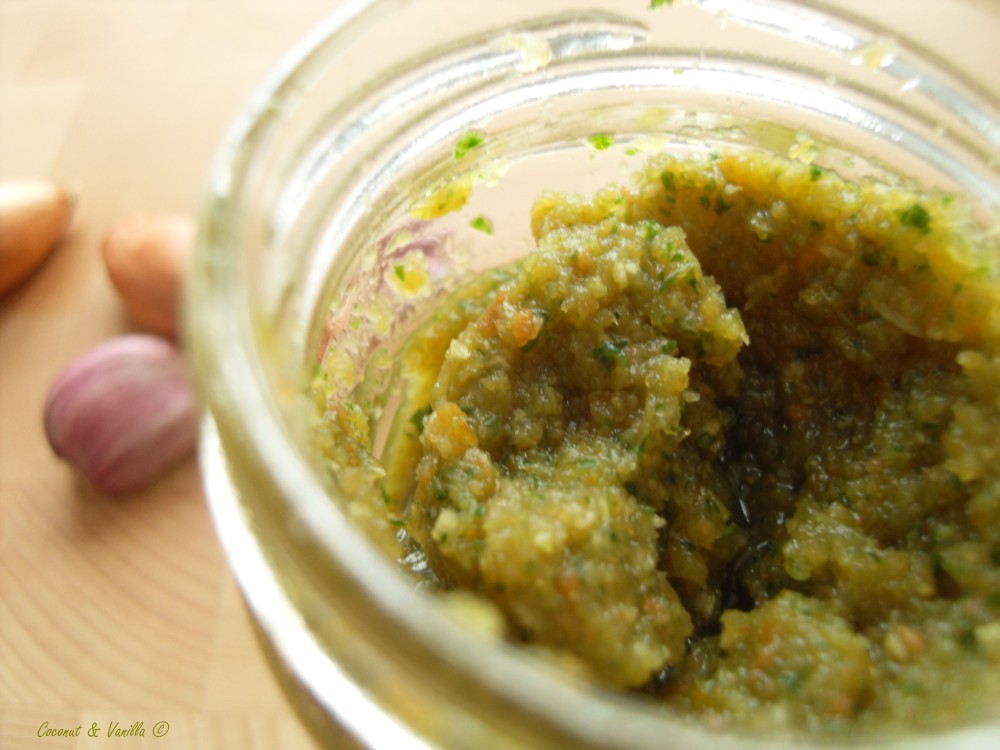Dieses Jahr können wir ein kleines Stück Acker unser Eigen nennen. Wir haben uns 45 qm bei meine Ernte gemietet. Darin enthalten ist schon ein ganzer Gemüsegarten. Gesäte und gesetzte Pflanzen, wie Kürbis, Bohnen, Kartoffeln, Radieschen, Spinat, Salat, Kohlrabi, Rucola, Zucchini, Gurken und noch viel mehr sind schon auf dem Feld. Wir gießen, jäten Unkraut (oh ja!) und pflegen unseren Garten. Außerdem haben wir so viel Platz, dass wir noch Tomaten, Paprika, Chilis und gelbe Rüben angepflanzt haben. Wasser und die Gartengeräte werden alle gestellt. Bis auf ein paar Stützen für ein paar Pflanzen und eigenes Engagement muss man also nichts mitbringen! In 25 Minuten sind wir mit dem Fahrrad auf unserem Feld. Zwei- bis dreimal die Woche sind wir jetzt unterwegs um nach unserem Garten zu schauen. Da wir leider keinen eigenen Garten haben, ist das in der Stadt eine super Alternative! Es geht einfach nichts über selbst angebautes Gemüse!
Diese Woche haben wir bereits unseren ersten Salat, Spinat und Radieschen geerntet. Spinat und Salat waren sehr gut, die Radieschen leider sehr holzig. Kein Beinbruch für mich, da ich kein großer Radieschen-Fan bin. Leider sind bei uns keine Buschbohnen gekommen und auch der Rotkohl ist nicht angewachsen. Mal sehen was wir da machen werden. Grüne Bohnen mag ich nämlich besonders gerne.
In diesem Bild habe ich die Grenzen unseres Beetes mal farblich hervorgehoben:
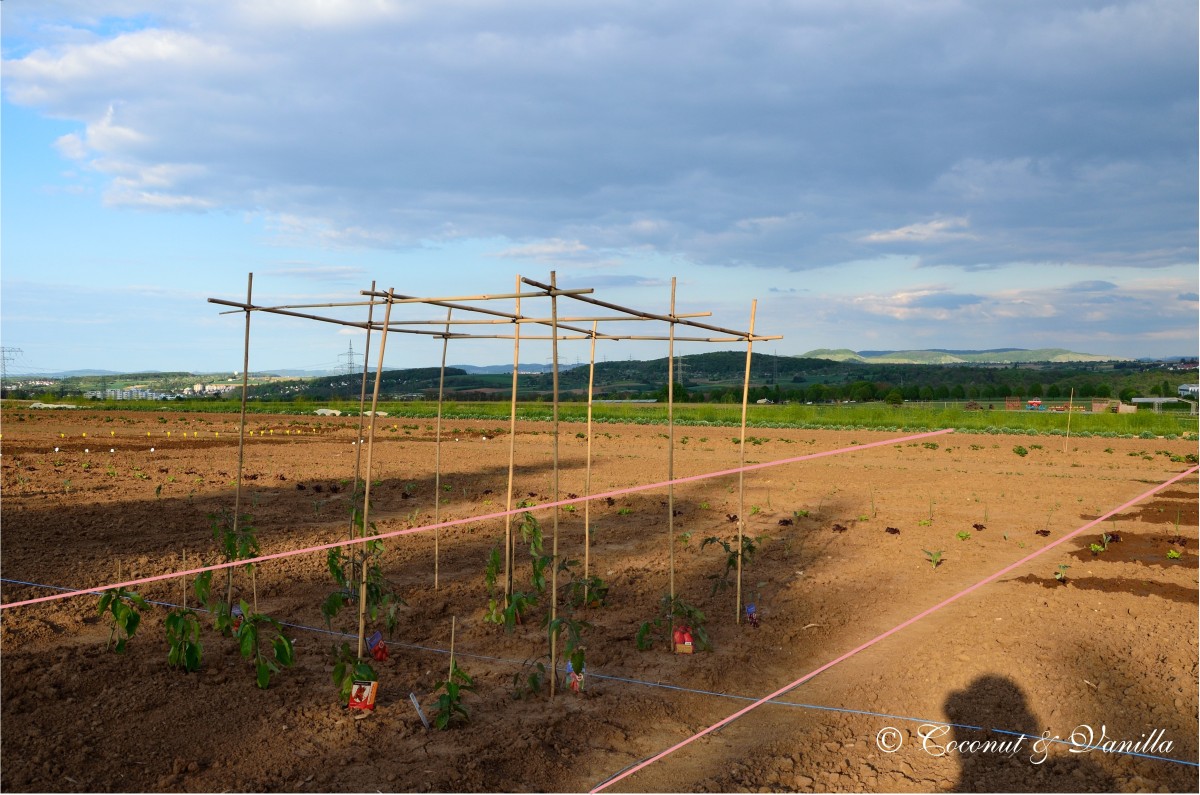
Das ist unser Beet einen Monat später (dieses Wochenende). Im Vordergrund eine Zucchini, Paprika (wenn jemand weiß warum unsere Paprika und Chilis nicht wachsen, lasst es mich bitte wissen!), Chilis und Tomaten. Dahinter kommt der Kürbis (weiter im nächsten Bild).
Im Bild unten, von unten nach oben: Kürbis, Kohlrabi, Salat, Lauch, Zuckerschoten, Sonnenblumen.
Im Bild unten, von unten nach oben: Feuerbohnen, Spinat, durch den Spinat verdeckte Radieschen, Möhren, Zwiebeln, Mangold, Kartoffeln.
Im Bild unten die selbst gesäten gelben Rübchen.
Hier hängen unsere ersten San Marzano Tomaten. Yippieh!

Kartoffelblüten:

Wunderschöner Salat:
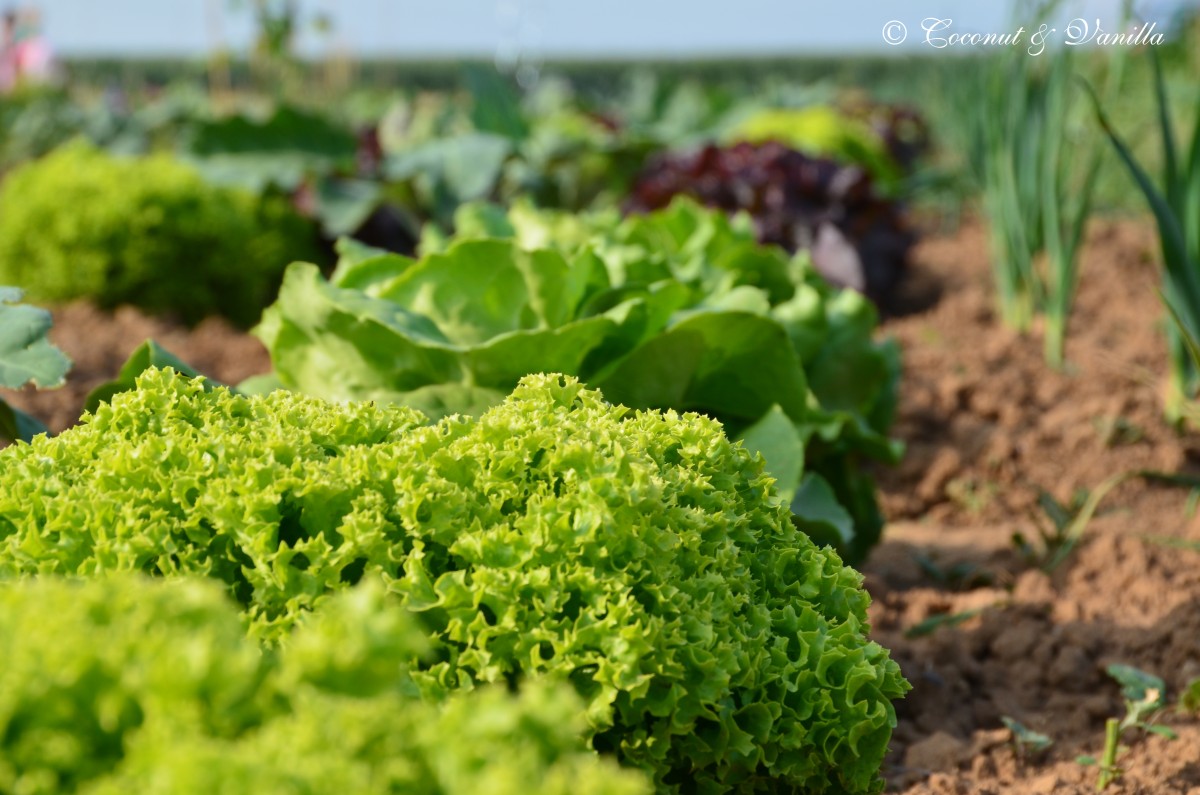
Ich werde Euch auf dem Laufenden halten was auf unserem Feld noch so passiert!
This year we can call a small patch our own. We rented 45 sq m from meine Ernte (in english: my harvest). This includes already a whole vegetable patch, with seeded and planted plants of hokkaido, beans, potatoes, radishes, spinach, lettuce, kohlrabi, arugula, zucchini, cucumber and a lot more. We water the plants, pull up the weeds (a lot!) und cultivate our patch. Moreover we have more free space, so we planted tomatoes, peppers and yellow beets.
Water and gardening tools are provided. Unless some stakes for some plants and your own dedication you have to bring nothing!
We can reach our patch in 25 minutes by bike. Two to three times a week we go there to look after our patch. As we don’t have an own garden – as we are living in the city – this is the perfect alternative. There is nothing like home grown vegetables!
This week we already harvested our first lettuce, spinach and radishes. The lettuce and the spinach were fabulous, but the radishes were very stringy. Not a big problem for me, since I’m not a huge fan of radishes at all.
Unfortunately the bush beans didn’t grow and the red cabbage didn’t take any roots, too. We will see what we do about that, since I’m a lover of green beans.
In the picture below everything was fresh and new (one week after we were handed our beets in a „ceremony“):
I highlighted the borders of our patch in the next picture, so you can get an idea of the size.

This is our patch one month later (this weekend actually).
In the foreground one zucchini, bell peppers, peppers (if you someone knows why our peppers are not growing, please let me know!) and tomatoes. Behind that, the hokkaido (continue with the next picture).
In the picture below, from bottom to top: red kuri squash, kohlrabi, lettuce, leeks, sugar snap peas, sunflowers.
In the picture below from bottom to top: fire beans, spinach, radishes screened by the spinach, carrots, onions, Swiss chard, potatoes.
In the picture below the yellow beets, we planted ourselves.
We proudly present our first San Marzano tomatoes! Yeah!

Potatoes in bloom:

Beautiful lettuce:

I will keep you informed about what will happen on our patch!


